One of the most interesting books I read last year was Alexandra Lange’s Meet Me by the Fountain: An Inside History of the Mall (2022). Lange, an architecture and design critic, chronicles the American shopping center from its origins in the 1950s to its uncertain post-Covid future. She focuses on Victor Gruen, né Viktor Grünbaum (1903-1980), the Austrian-American architect whose Northland Mall, which opened near Detroit in 1954, is regarded as the first suburban open-air shopping center in the U.S. Gruen’s Southdale Mall, which opened in 1956 in Edina, Minnesota, is often cited as the first enclosed shopping mall in the country. So influential were Gruen’s designs that a phenomenon called the Gruen transfer (or Gruen effect) is named after him. (He wasn’t happy about that.) It describes “the moment when consumers enter a shopping mall or store and, surrounded by an intentionally confusing layout, lose track of their original intentions, making them more susceptible to making impulse buys.”
But before either Northland or Southdale there was the Stonestown Shopping Center — now the Stonestown Galleria — an enclosed mall a mall1 that opened in July 1952 on San Francisco’s western edge and which originally housed some 75 retail businesses, including an Emporium department store, a Walgreen’s, a Woolworth’s, a grocery store, a bakery, and movie theaters. Stonestown took its name from its developers, Henry and Ellis Stoneson, the sons of Icelandic immigrants to Canada. (Stoneridge Shopping Center, in Pleasanton, is also named for them.)
I’d been hearing that Stonestown was a rare bright spot in San Francisco’s retail scene. (See: “doom loop.”) So on Saturday I took myself on a field trip.
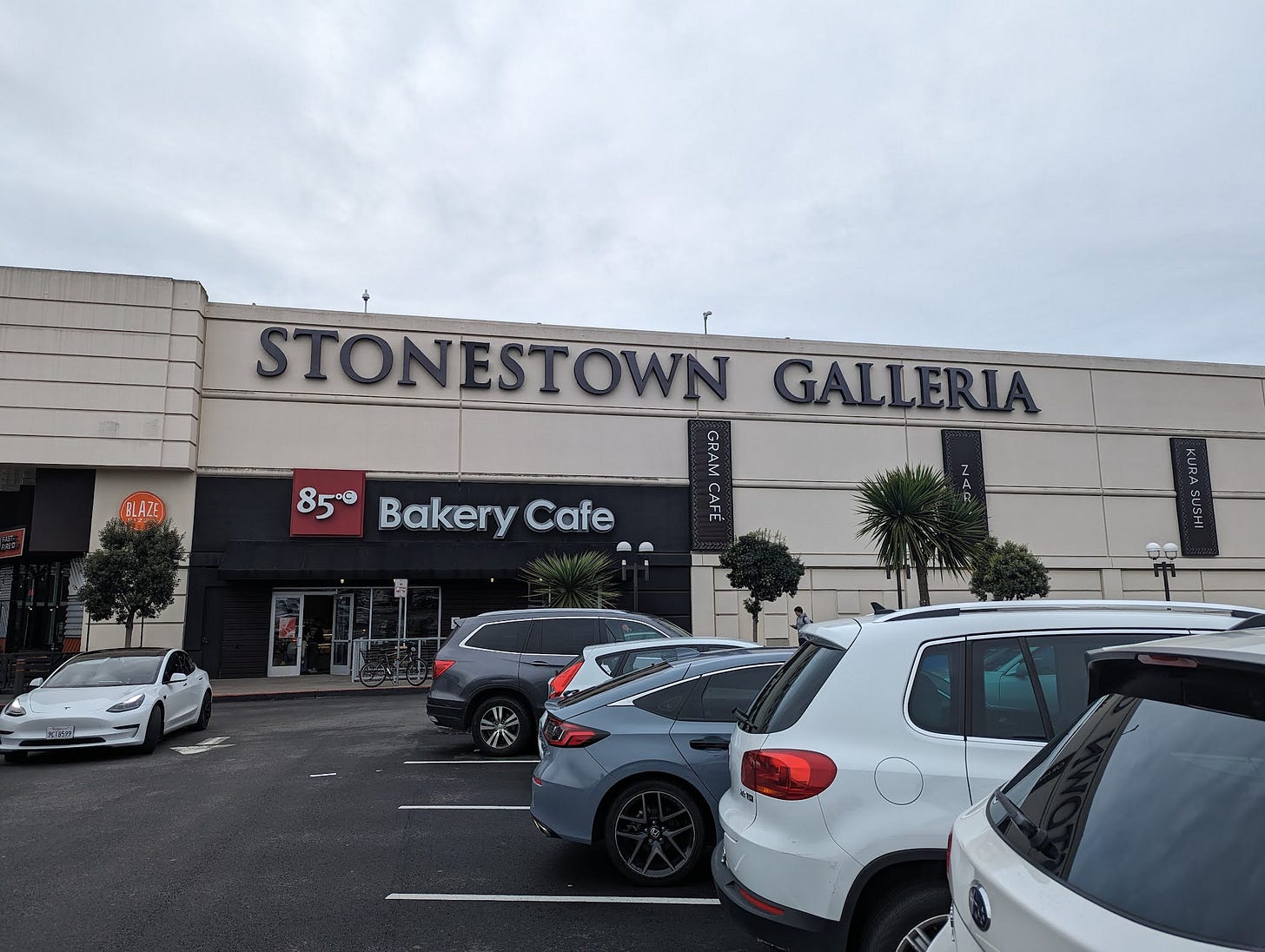
The last time I’d visited the Stonestown Galleria had been more than a decade ago, when Macy’s and Nordstrom — both long gone now — were the anchor tenants. There’s still a large Target, a Whole Foods, a Trader Joe’s, and some predictable mall fixtures like Zara, Sephora, Jamba Juice, and Uniqlo. But for the most part, going to the Stonestown Galleria is less like visiting Middle America and more like traveling to the Pacific Rim, minus the jet lag. There are shops and restaurants from Japan, China, Korea, Singapore, Taiwan, and Australia, many of them new to me. Even the Shake Shack — founded in New York in 2004 — touts its Korean-inspired menu items. On Saturday, the whole place was full of life and surprises. Here are a few highlights.
Note: Substack tells me this post is too long for email. Click through to read it in its entirety (or get the Substack app).
2nd Street
I’d seen an Instagram post about this Japanese used- and vintage-clothing store and was curious to check it out. (The “2nd Street” name is, I’m guessing, a reference to “secondhand.”) The business launched in Kagawa, Japan, in 1996; its first U.S. store (2018) was on L.A.’s Melrose Avenue. The Stonestown store opened in September 2023; there’s also a store on Haight Street.
The product range is diverse, from skater styles to fancy designer stuff. I saw a pair of hideous be-logoed Gucci sweatpants marked $449 and a made-in-Canada gabardine men’s jacket with sharp lapels — from a waiter’s uniform? — for $29. A new-with-tags Soia & Kyo woman’s wool coat, also Canadian, that probably retailed for $600 was improbably marked $19, possibly because hardly anyone in San Francisco needs a heavy wool coat. It sure was a beauty, though.
Typo
I could hardly resist a stationery store called Typo, could I?
It’s a subsidiary of an Australian retailer called Cotton:On (new to me, and no, I don’t know what that name means), which maintains a separate presence in the mall. I saw lots of nicely designed notebooks and rugged-looking canvas tote bags and laptop covers. The insulated bottles in sherbet colors are pretty appealing, too.
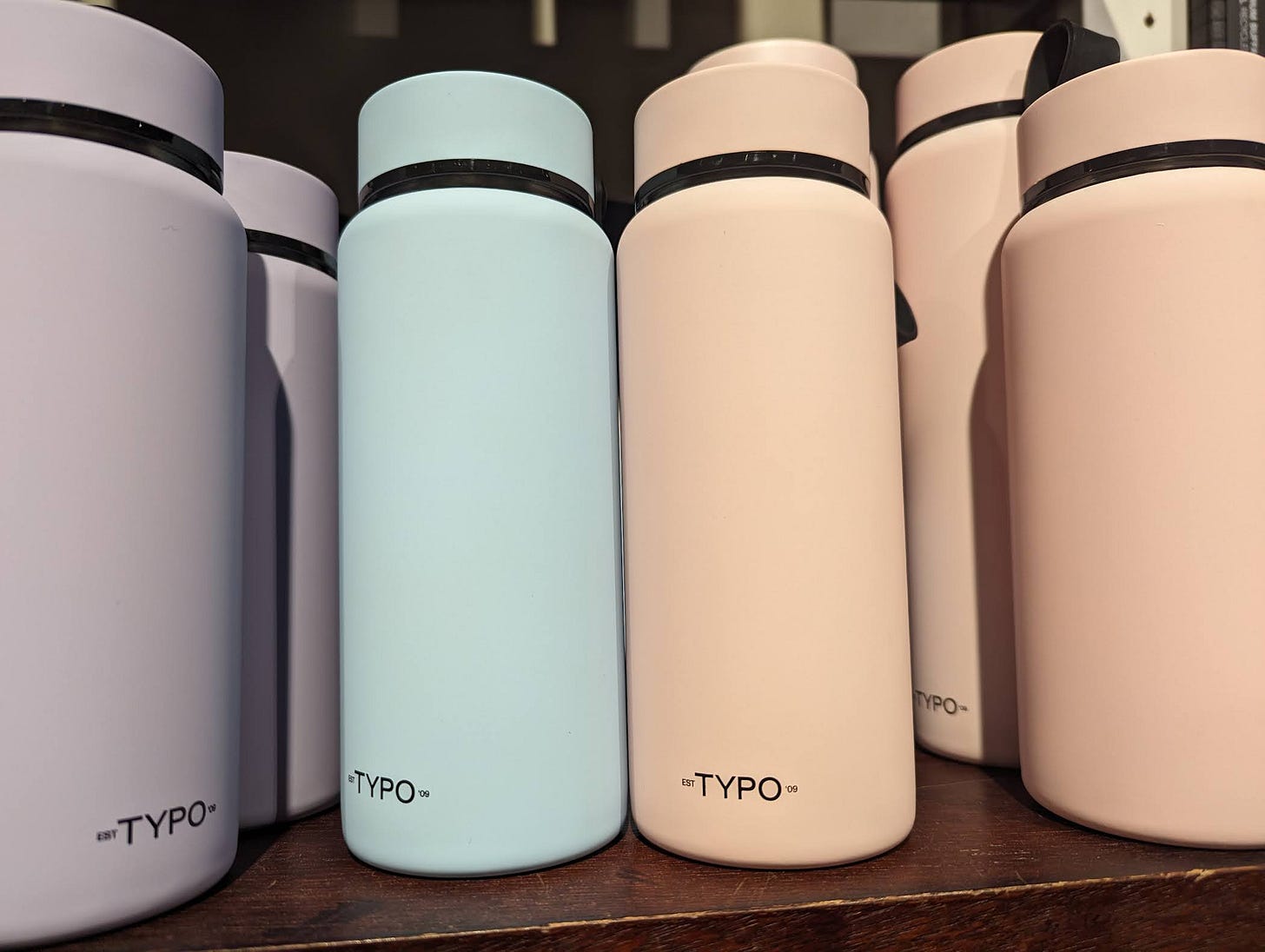
Daiso and Miniso
I’d been to both of these stores previously, but hadn’t seen them under a single roof. As with stationery stores, I am a pushover for a dollar store crammed with tiny things from Asia that I didn’t know I needed.
Daiso was founded in Japan in 1977; it now has thousands of outposts throughout Asia and more than 80 in the U.S. (The first American store opened in 2005, near Seattle.) I’ve seen the name translated as “big warehouse” and also as “big” plus “to create”; it may also have been chosen as a Japanization of “dollar store,” although “hundred-yen store” would be more accurate. (The progenitor of the genre, the National Dollar Stores chain, opened in Oakland, California, in 1901, followed, of course, by many five-and-ten-cent stores, where you could, as the song goes, find a million-dollar baby.)
I bought a cylinder of Classic Dolcetto Hazelnut Rolled Wafers for $2. The label says they’re a product of Indonesia. Hazelnuts in Indonesia? Tasty regardless.
Miniso sure looks like a Daiso copycat, and it probably is, starting with the name. (In Chinese it’s Míngchuàng Yōupǐn,) Here’s the Wikipedia version:
MINISO was founded in 2013 by Chinese entrepreneur Ye Guofu.[failed verification][1] MINISO's first store opened in China in 2013.[10] The company claims that Japanese designer Miyake Junya co-founded MINISO,[11] although local media reports in China and Japan have questioned Junya's existence.[12][13][14] The company initially claimed to be a famous Japanese brand, despite operating in Mainland China under Chinese company Aiyaya with no outlets in Japan.
I’ll leave the footnote-chasing to you.
The first U.S. Miniso store opened in Pasadena, California, in 2017.
Gram Cafe & Pancakes
You can find sushi and udon at Stonestown Galleria, but you can also find a Japanese specialty I hadn’t known was a Japanese specialty: “famous Japanese soufflé pancakes.” They look gorgeously fluffy, and I need to make a return trip to sample them. If only I’d read this San Francisco Chronicle review before my visit.
I could not find an explanation for the name, but it’s a nice fit for Instagram (the ’gram).
Uncle Tetsu
Cheesecake is something else you probably don’t associate with Japanese cuisine. Your loss, because Uncle Tetsu cheesecake is the best I’ve ever had. I gobbled down a little black sesame cheese tart so fast I didn’t have a chance to photograph it.
There really is, or was, an Uncle Tetsu: Tetsushi Mizokami, who founded the original Uncle Tetsu in Hakata, Japan, in 1985. The name reminded me of another wonderfully weird Japanese food chain: Beard Papa’s, which makes cream puffs to order while you wait. There really was a Beard Papa, too.
Purple Vine
I can’t tell you much about this store, other than that they need to hire a proofreader.
Candy Doll
I’m not a big beauty-products consumer, but I am helplessly drawn to Asian beauty stores. I couldn’t find out much about Candy Doll other than that it carries items from all over Asia, many of them in exuberant packaging like this facial mask. Brand names on the shelves include Canmake, Off & Relax, Abib, Bifesta, Honyaradoh, and Angfa. Good luck!
Pop Mart
The Pop Mart Robo Shop is a kiosk that dispenses collectible “designer” toys starting at about $17 each. The company was founded in 2010 by a Chinese entrepreneur, Wang Ning, who the Financial Times said has “elevated toy-buying to an act of trendy connoisseurship among China’s young affluent consumers.” There is a robust aftermarket for the toys, and venture capitalists “have been known to invest in [Pop Mart’s] second-hand products.”
I found the products interesting but eminently resistible.
Artly
Ready for a cup of coffee? Let a robot make it for you. Artly — yep, another name that ends in -ly — is based in Seattle; its URL is artly.coffee, which is nice. The company uses something called AGI (artificial general intelligence) to brew coffee drinks. I don’t know why it’s called Artly. Artistic creations?
Ping An Dragon
If you weren’t already convinced by the stores and the clientele that this is an Asian-influenced shopping center, this artwork should do the trick. To celebrate the Lunar New Year — it’s the Year of the Wood Dragon, beginning February 10 — the city of San Francisco commissioned five local artists to create wooden dragon sculptures that have been installed around town and will be on view through March 2. Donna Lau’s “Ping An Dragon,” in the Stonestown Galleria lobby, is one of them. “Ping An” means “peace and harmony” in Mandarin. Read a San Francisco Examiner article about Lau and her sculpture.
Stonestown Galleria feels like a glimpse into the future of American retail, at least here on the Pacific Coast. While legacy American retail brands falter for want of new ideas, and there’s talk of converting shopping malls into universities or apartments, the Pacific Rim companies represented at Stonestown seem fresh and vigorous, and the whole mall had a mellow, cheery vibe.
See a complete list of Stonestown shops and services.
Do you have associations, good or bad, with American shopping centers? Tell me about them in a comment.
Clarification: The Stonestown Galleria is a two-story enclosed mall now, but when it opened in 1952 it was a one-story open-air shopping center. Thanks to Joanna F. for setting me straight.





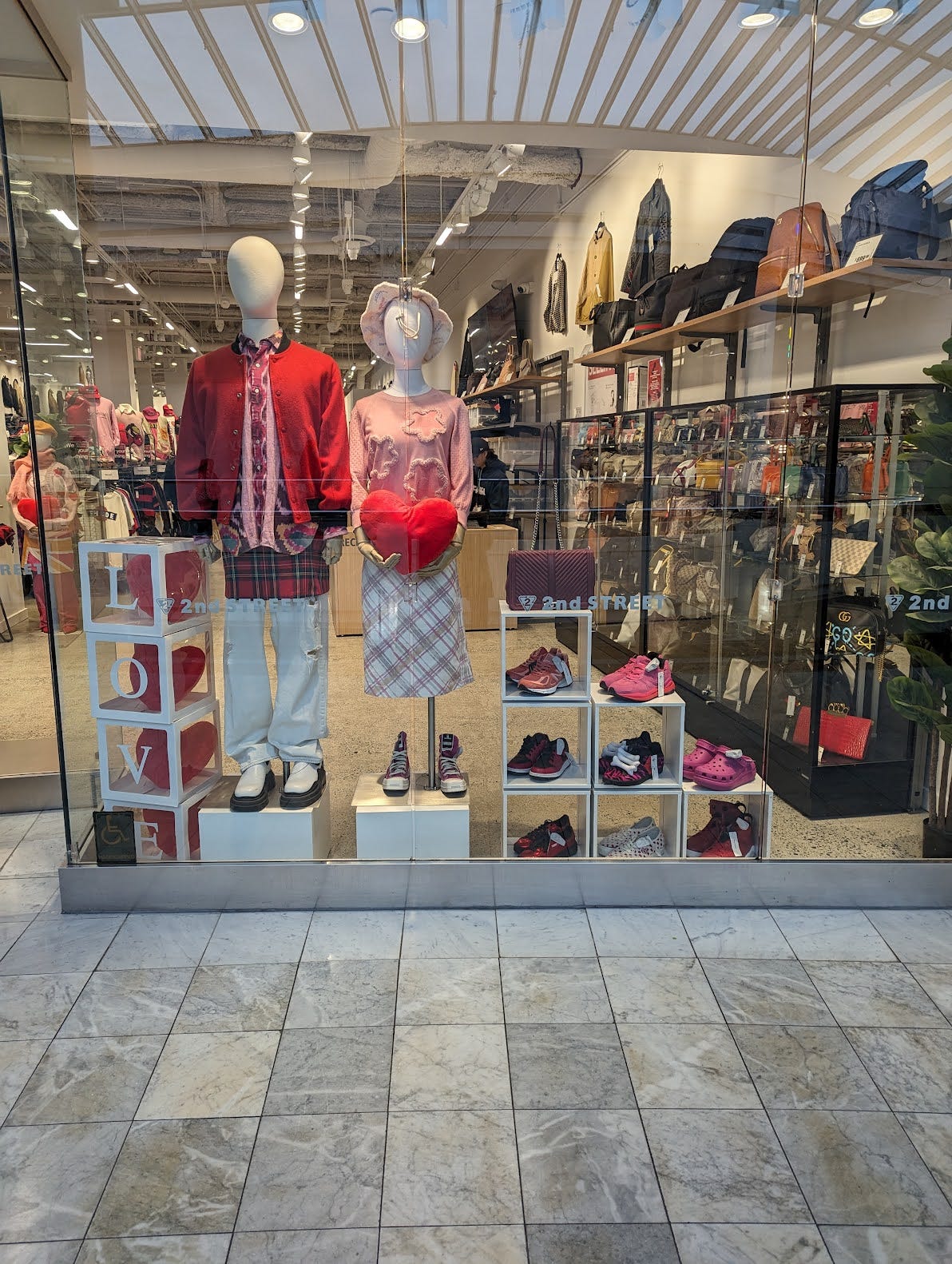


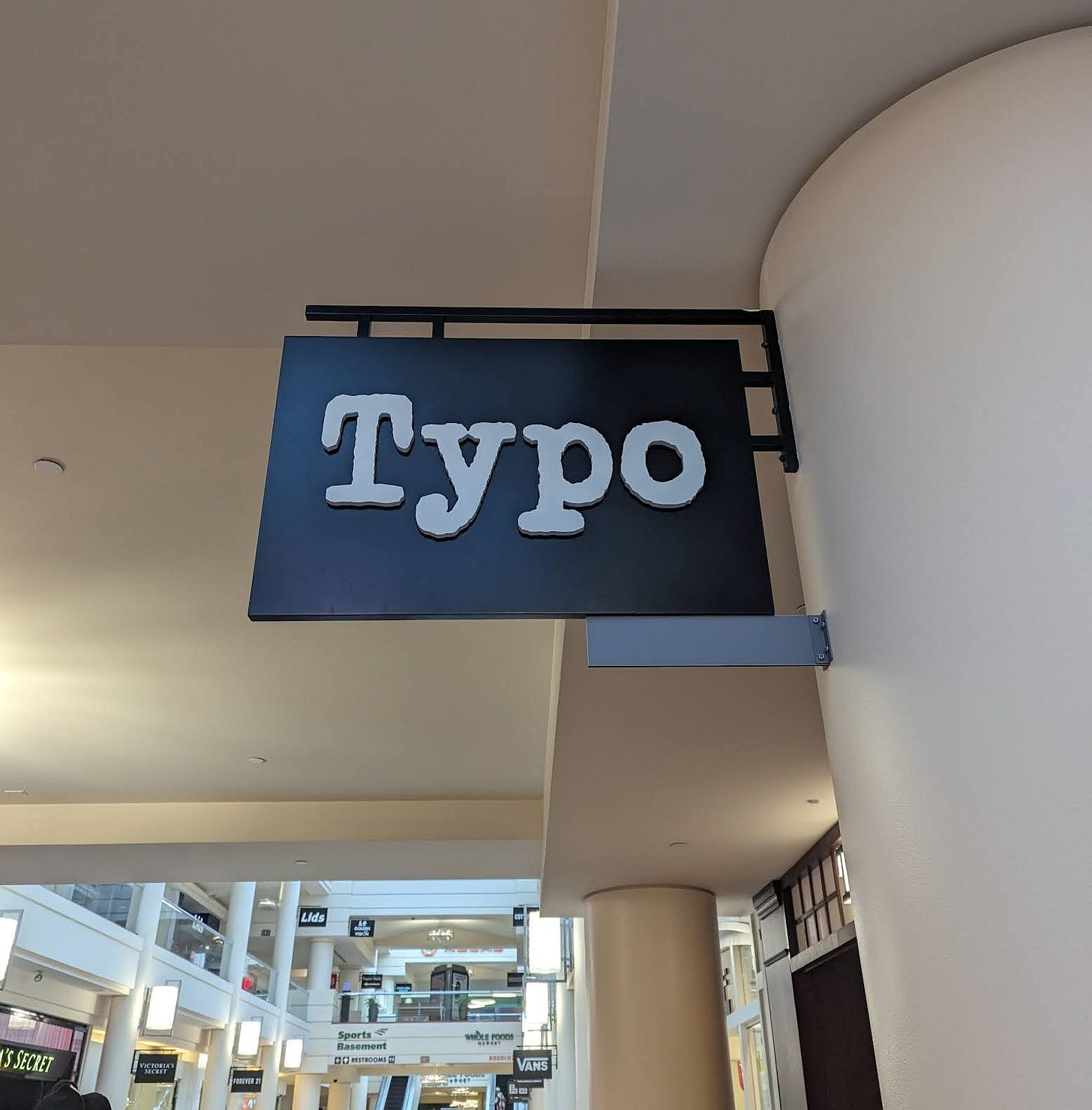
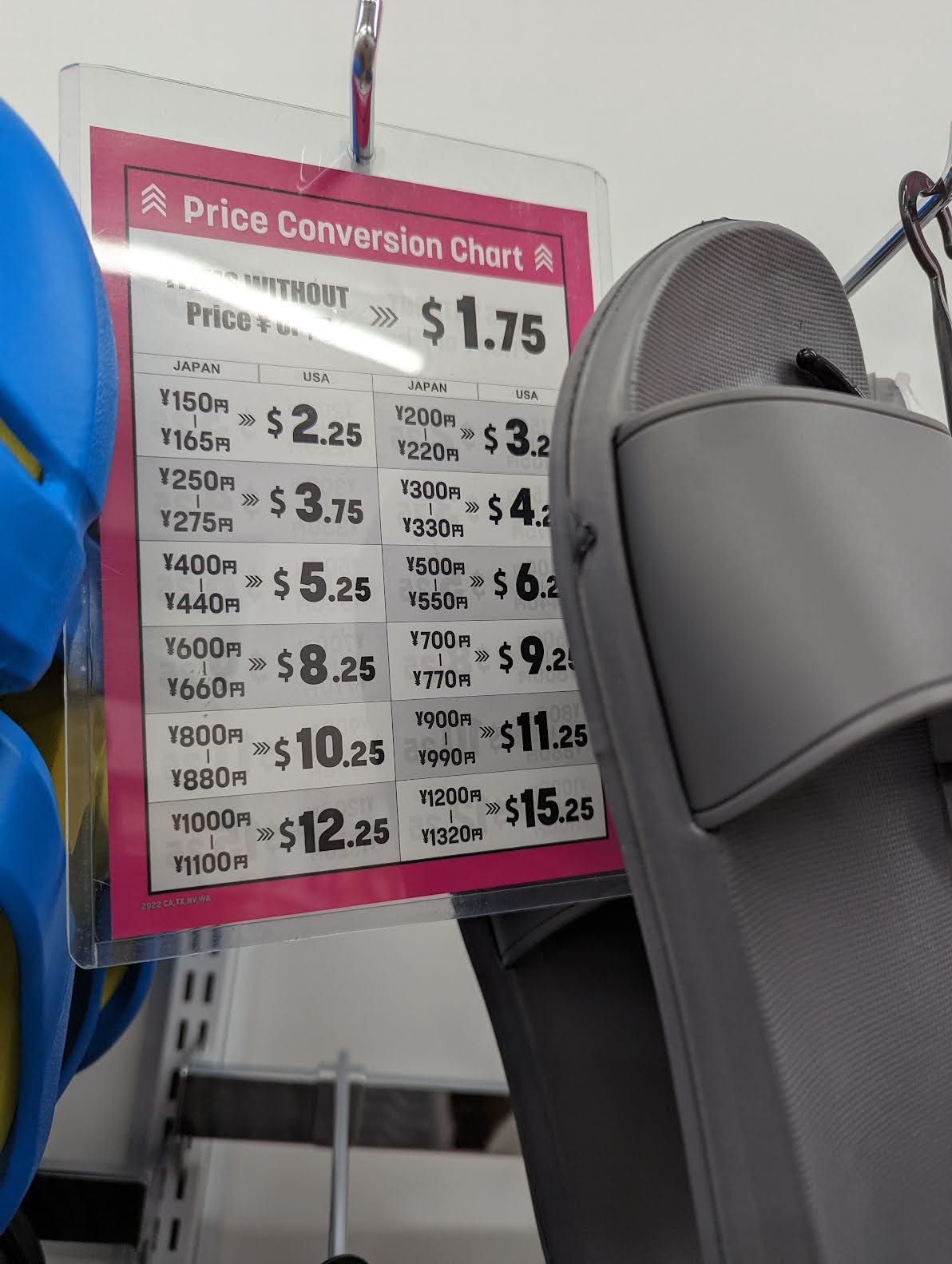
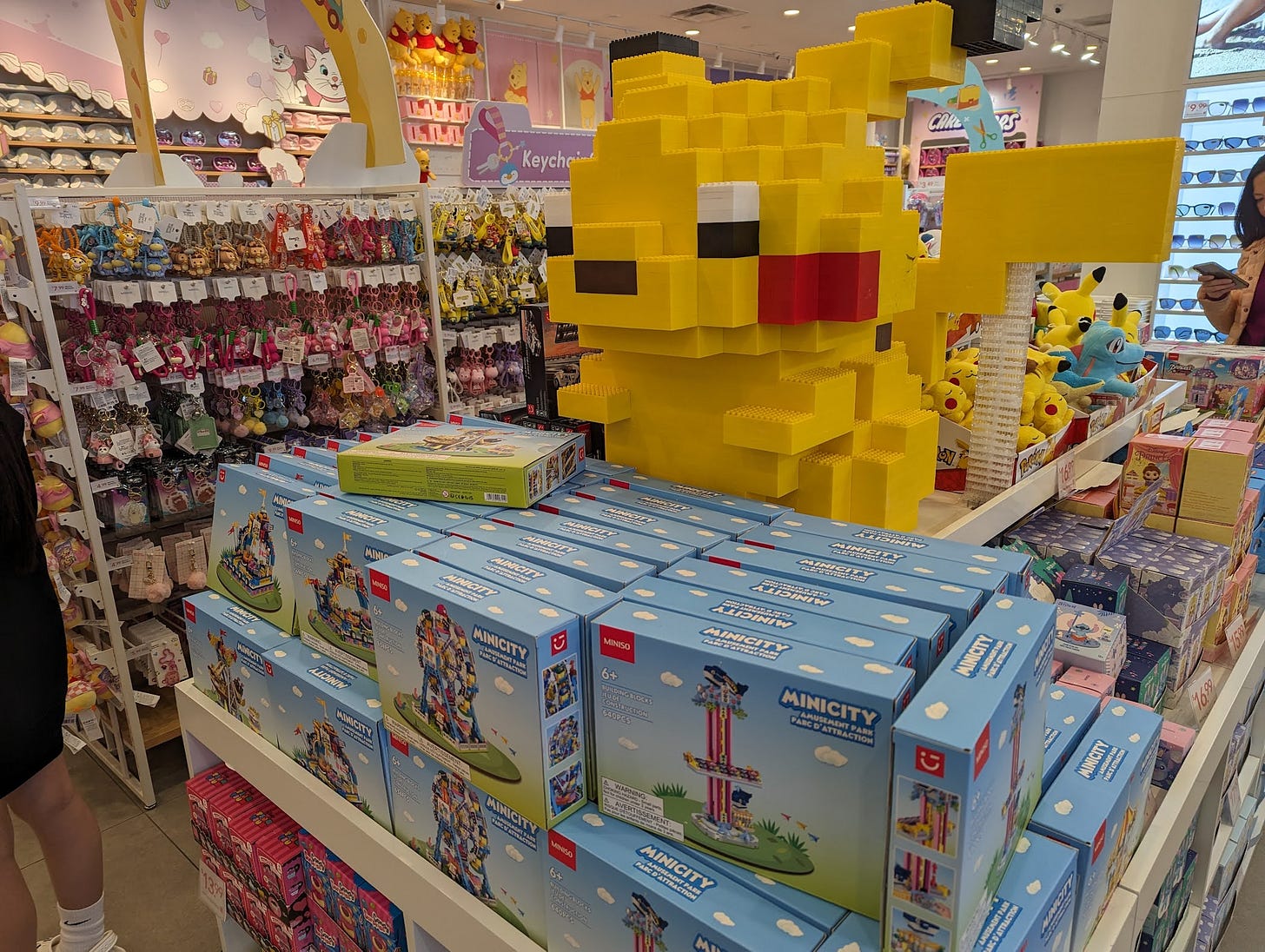
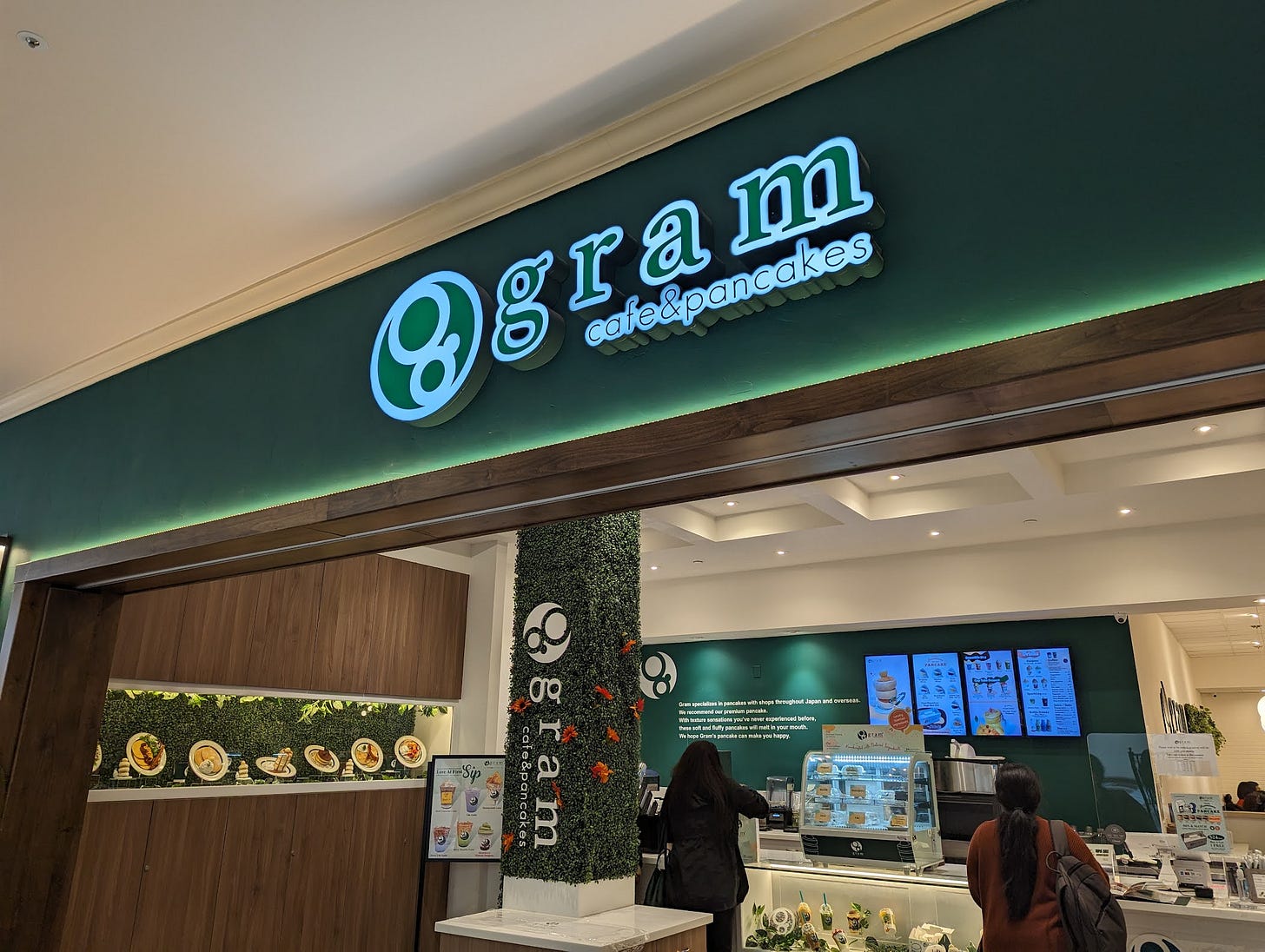
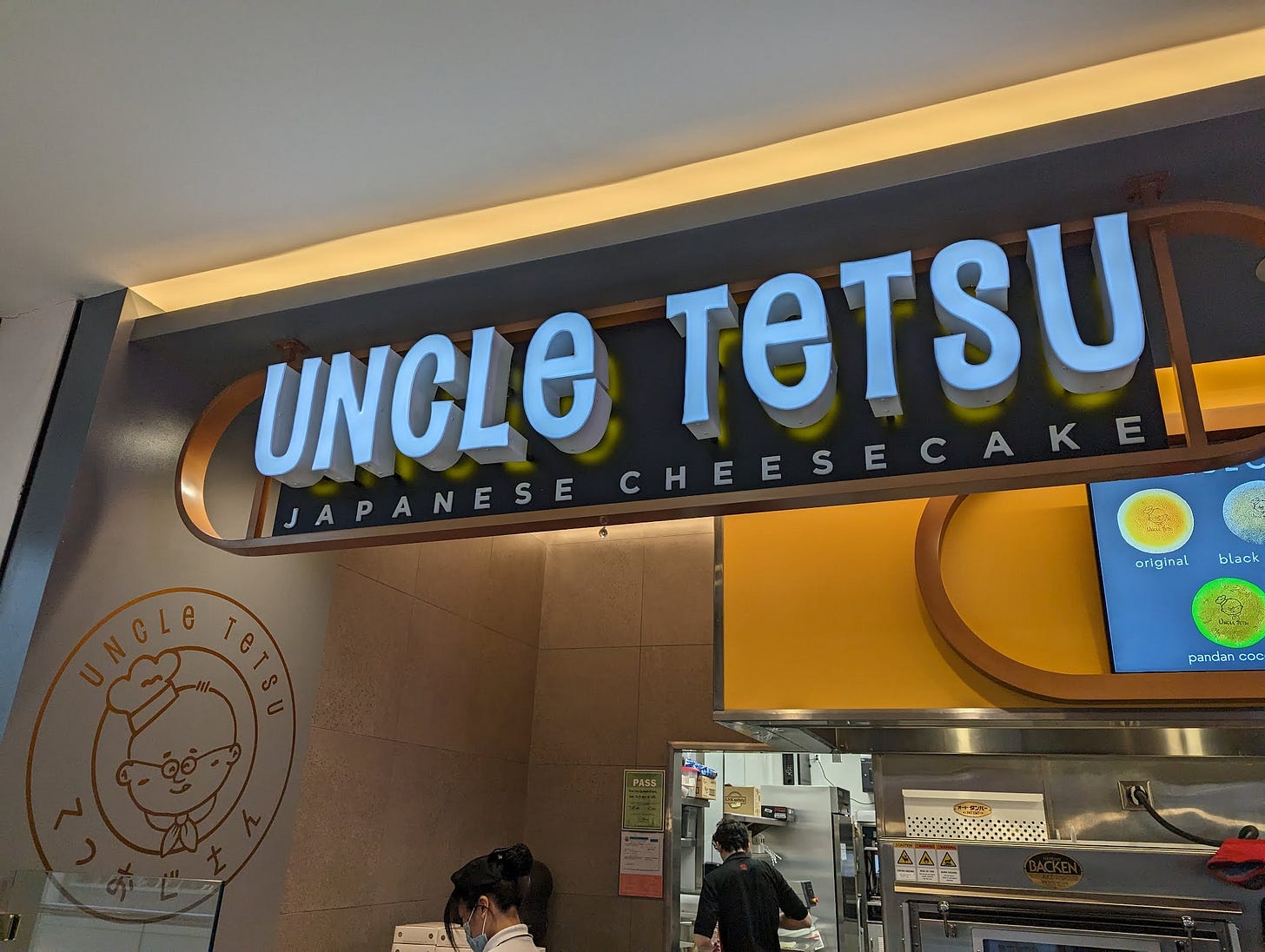
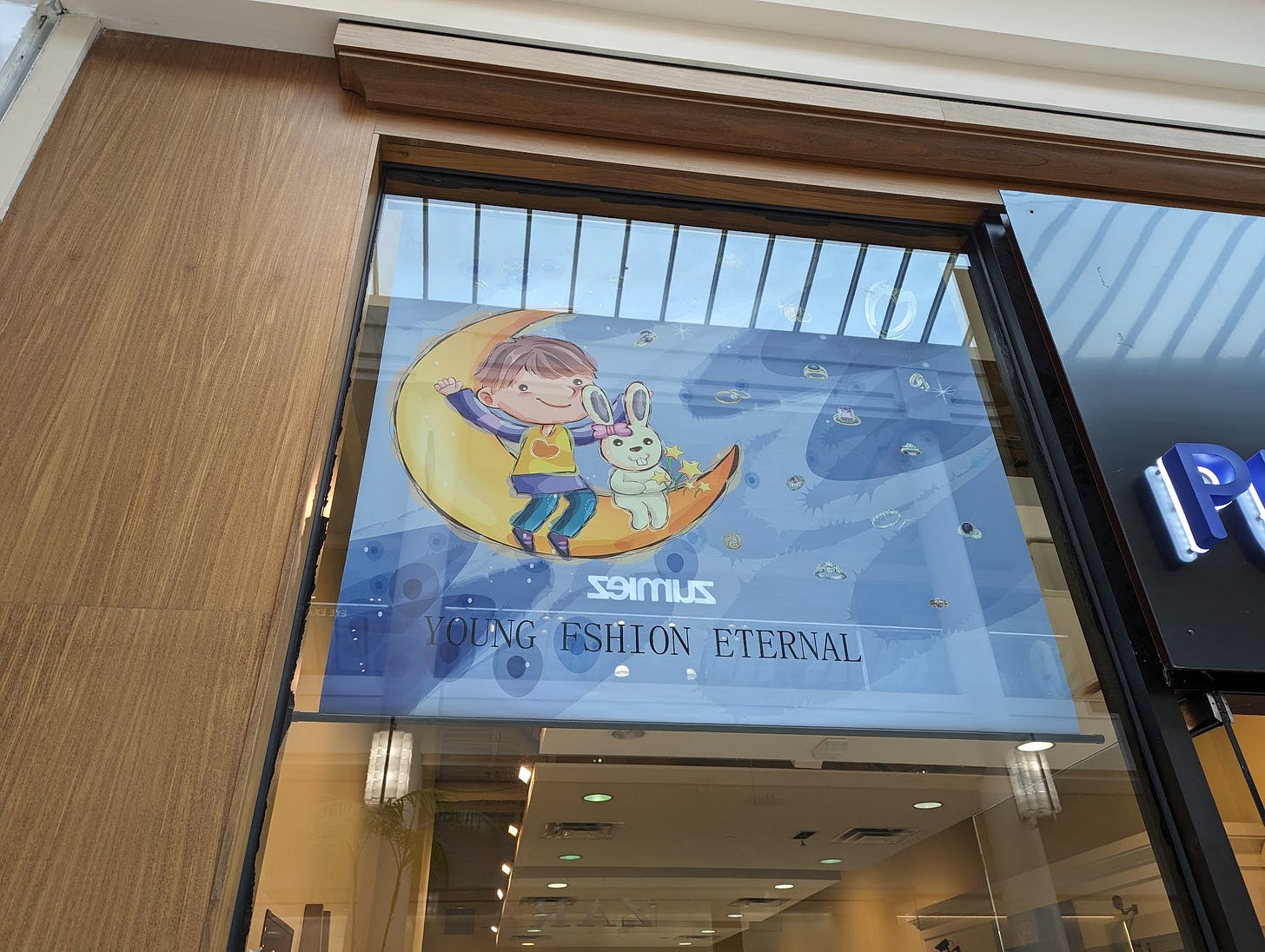
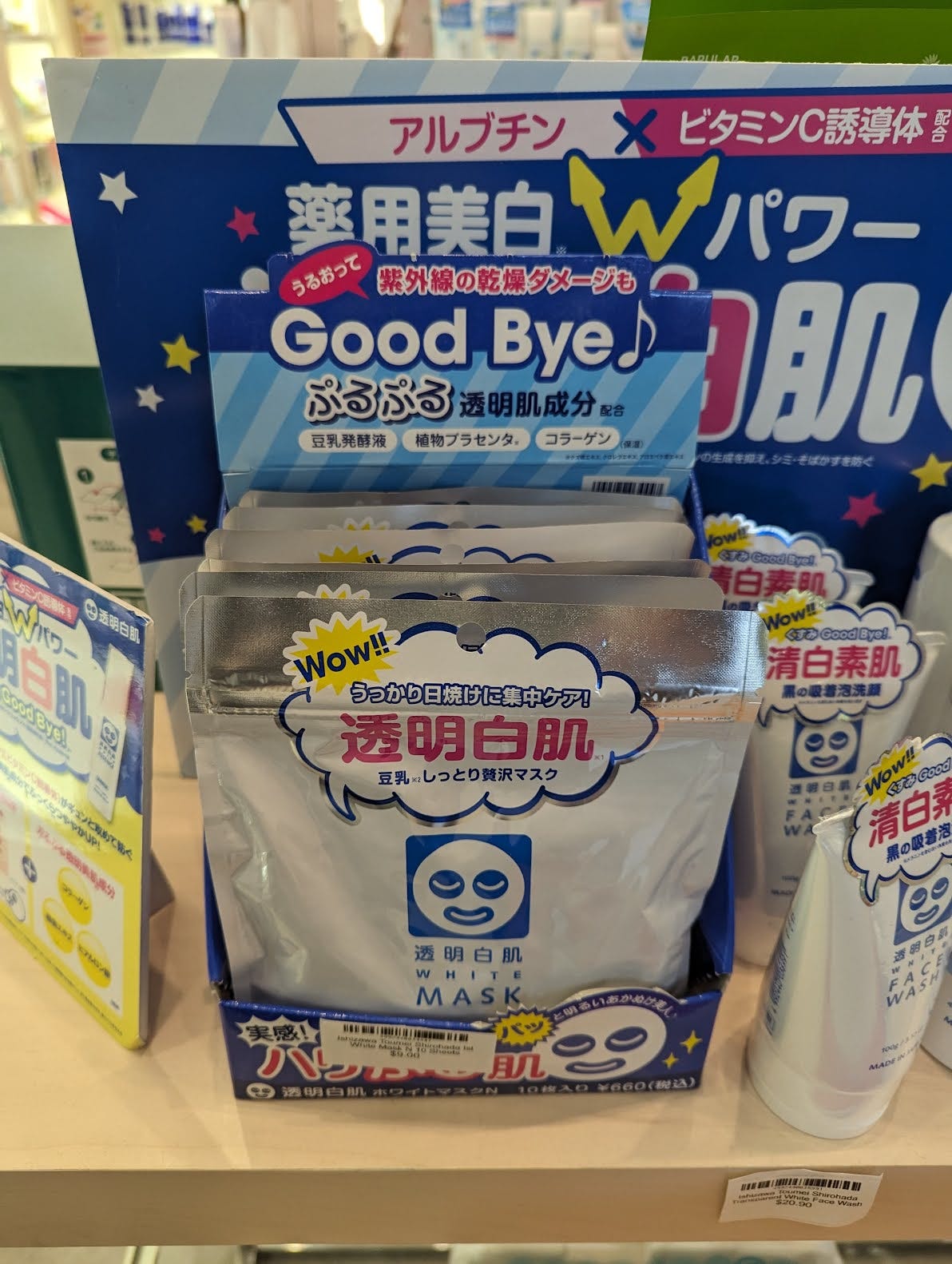
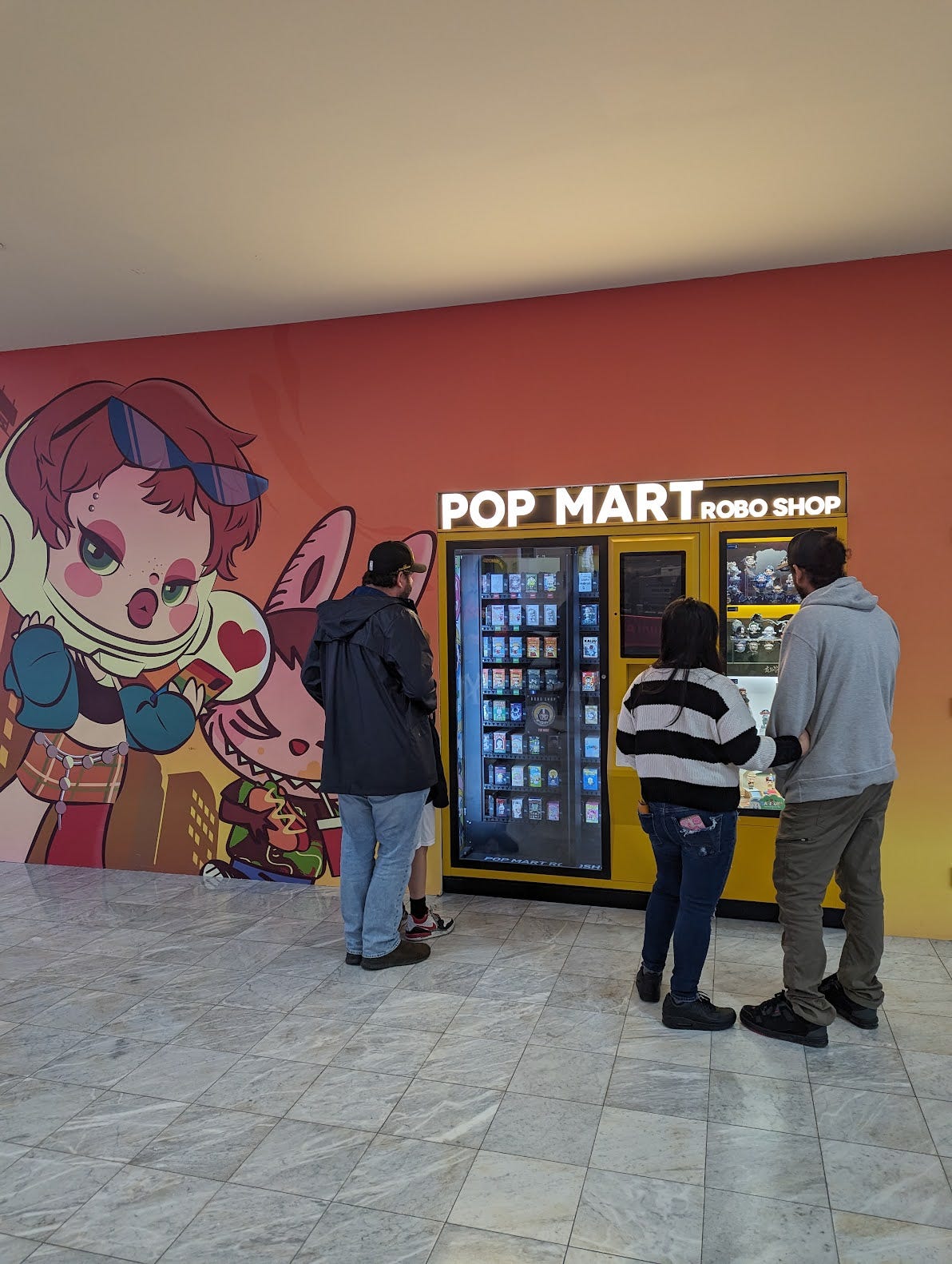
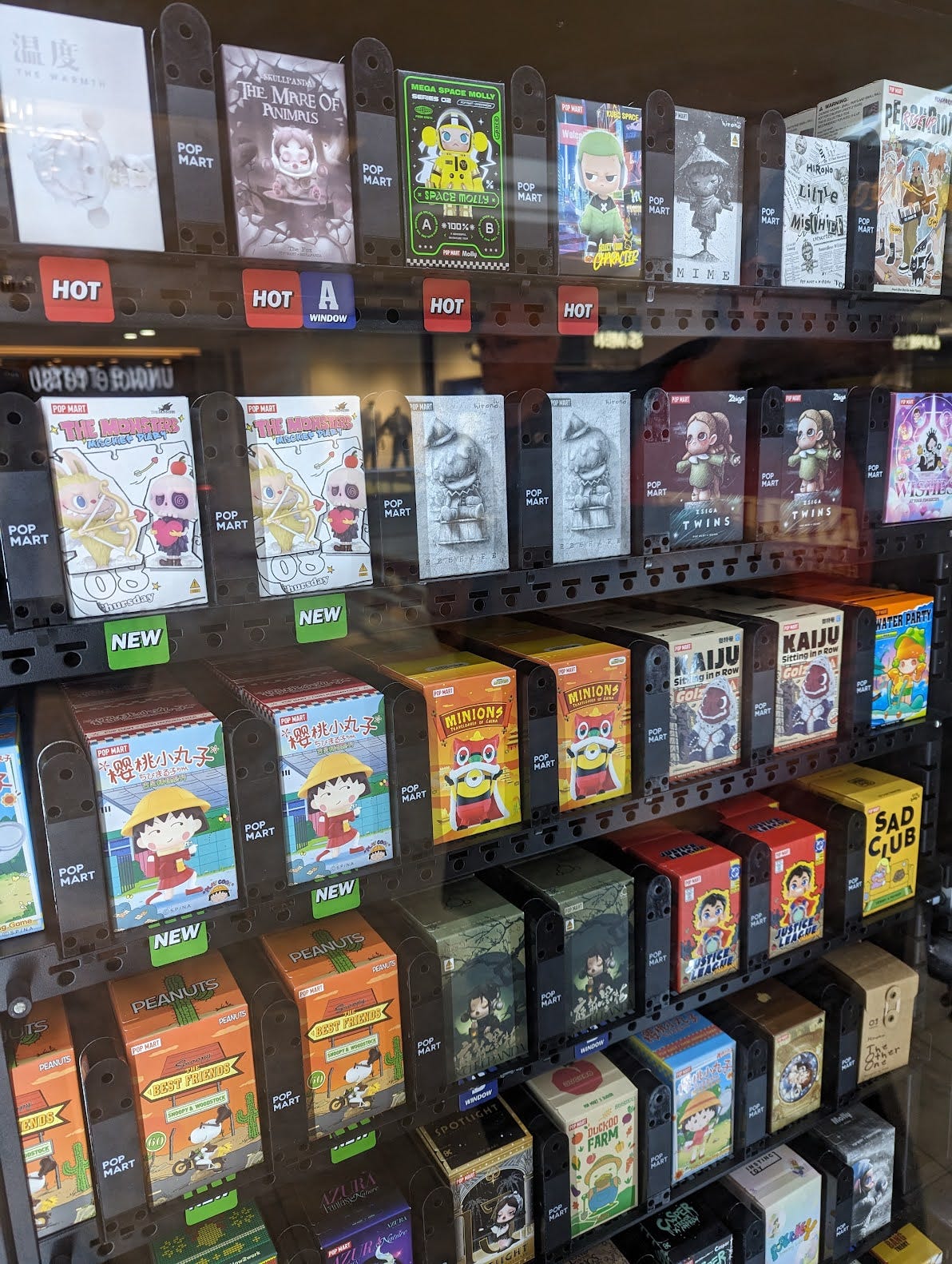
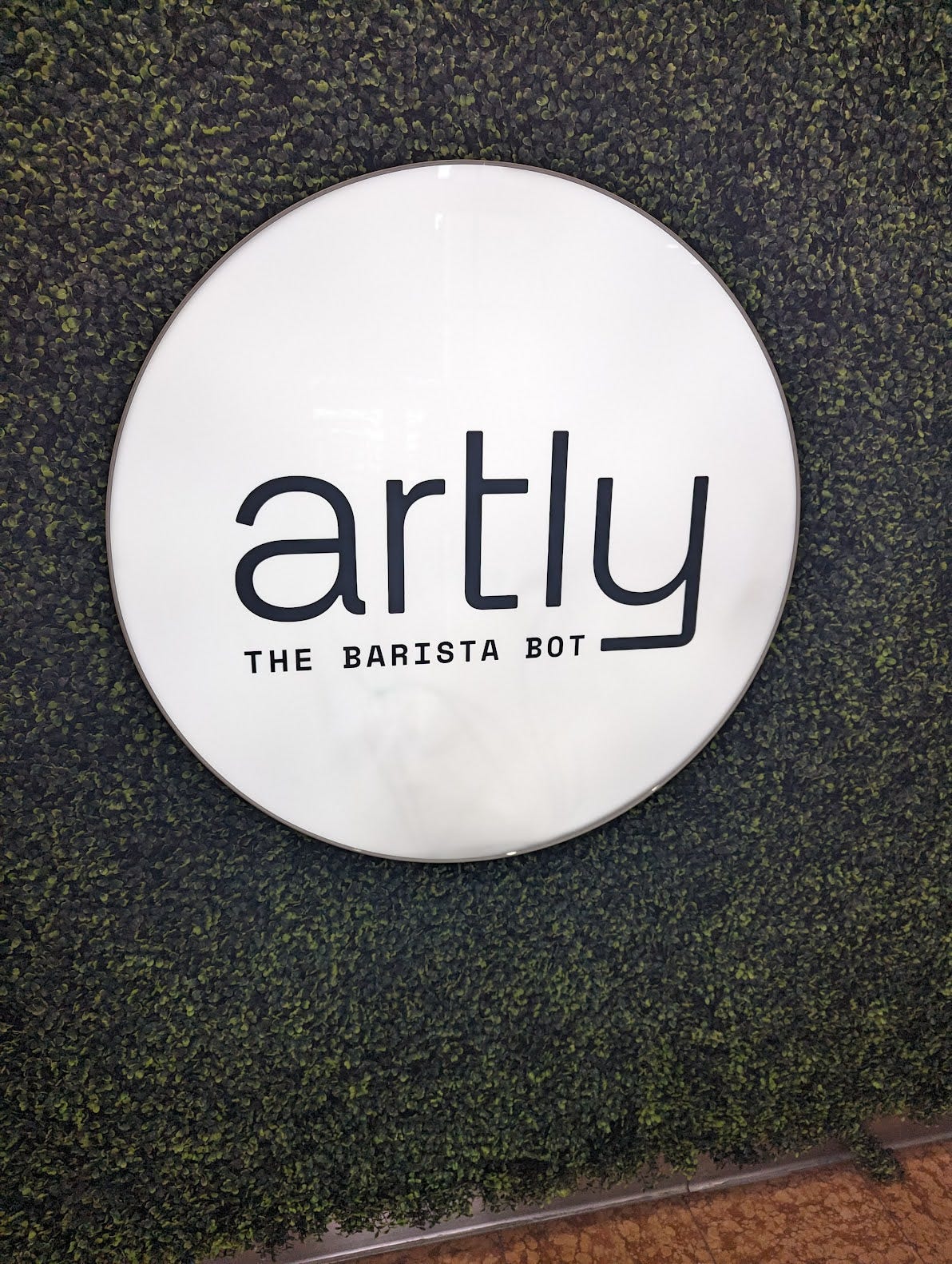
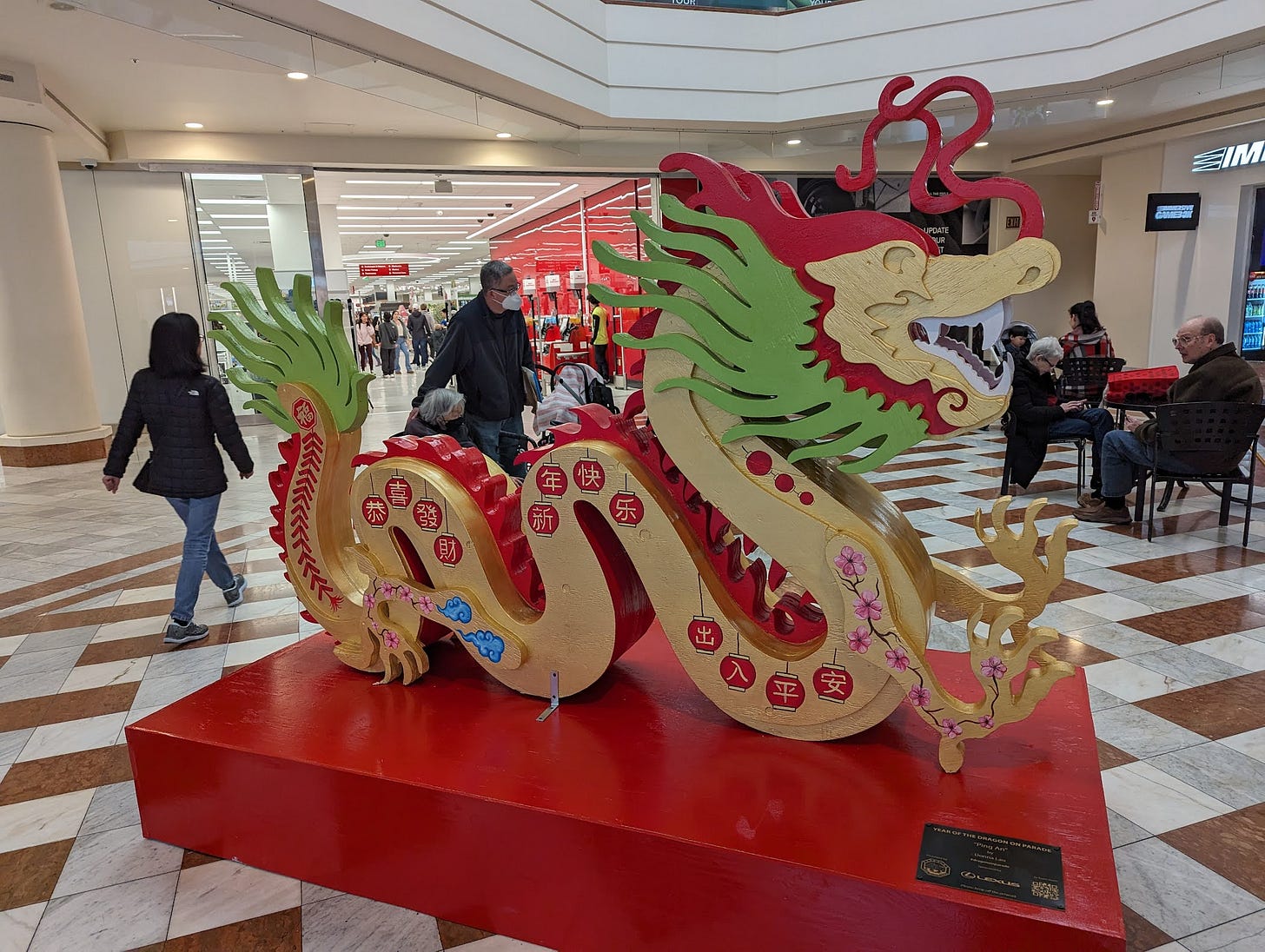
About Cotton:on - whether this has any relevance or not, but in British English the phrase to cotton on (to something) means to realise, or to suddenly understand, to get it, to be in the know.
Stonestown Mall was on my way to work down the Peninsula in the sixties, when I lived in San Francisco. I bought my first Joni Mitchell album there. From your report, it's now more like Pacific East Mall in Richmond, which is near enough to the Point Isabel Dog Park that I go there now and then. It has Asian restaurants, which you find in every downtown here, but also a big supermarket where you can get the ingredients to make your own Asian dishes.